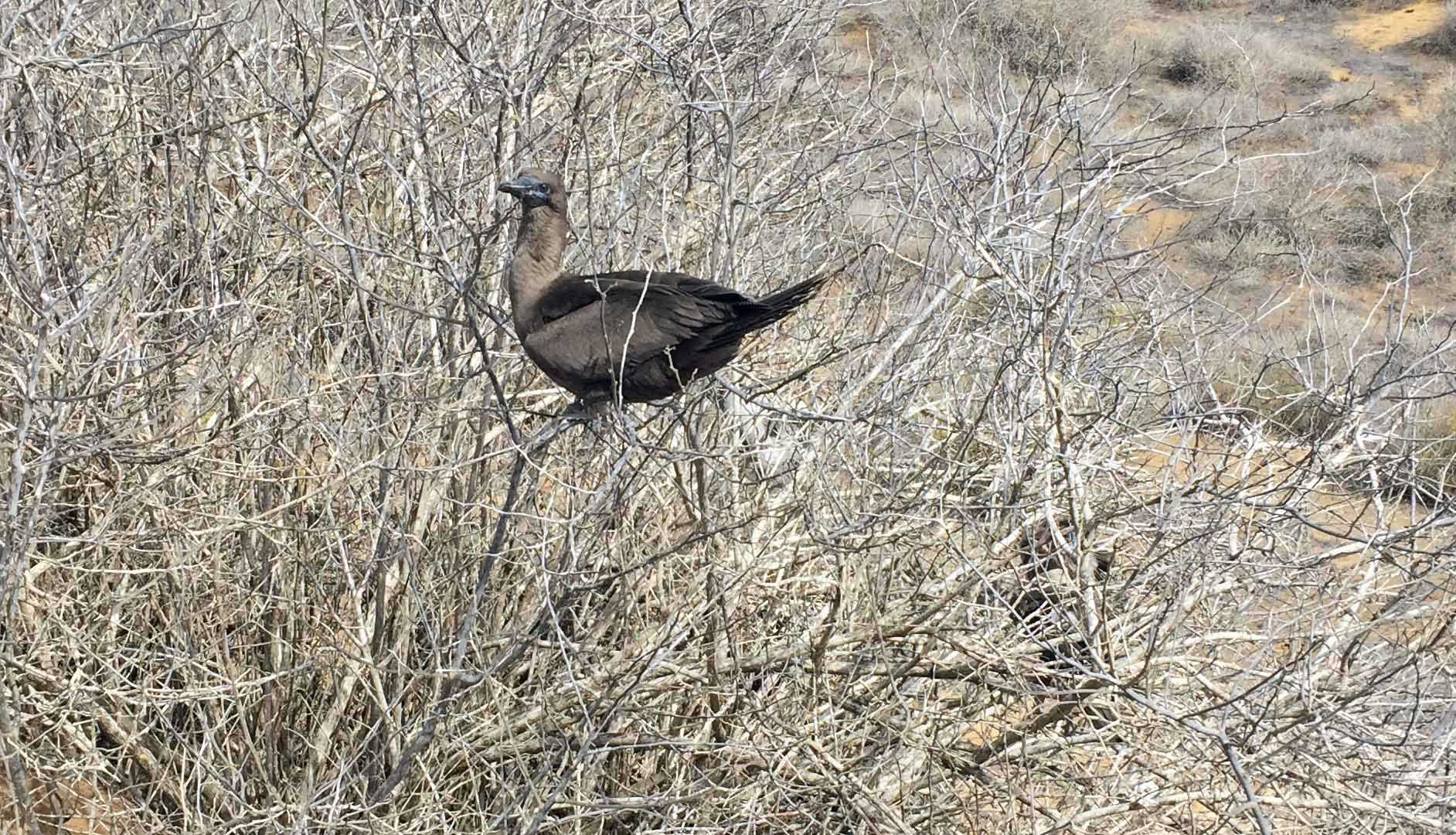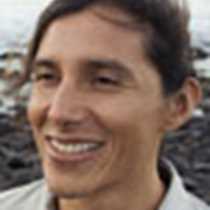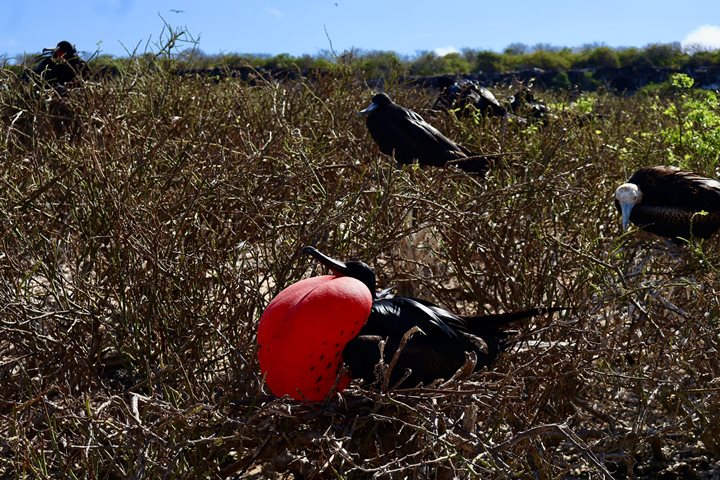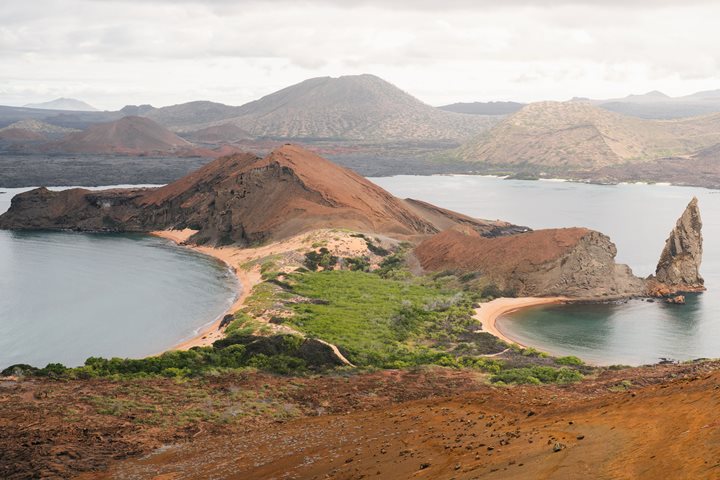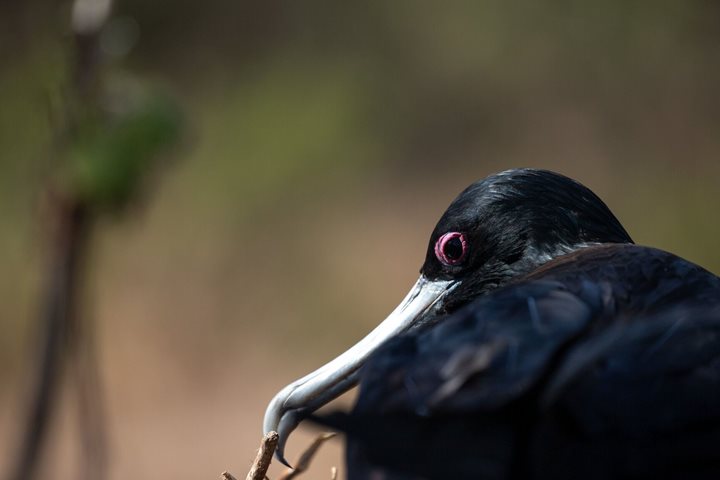Today we woke up at Punta Pitt, in the northeastern region of San Cristobal Island. This island, being one of the oldest of the Galapagos, gave us the chance to appreciate and compare the landscape with the youngest island, Fernandina, which we visited four days ago. In the morning, we went for a natural history walk where we could observe the third species of booby that we lives in Galapagos, the red-footed booby. We also saw other species of sea birds such as the frigatebirds and Nazca boobies, showing off their incredible flying abilities using the strong winds that are common at this time of the year. We ended this walk with a refreshing swim from an olivine sandy beach where we could enjoy the last snorkeling of this trip. In the afternoon, we disembarked in one of the most beautiful sandy beaches in Galapagos, Cerro Brujo, where guests enjoyed walking and swimming. We finished our day with a breath-taking navigation around Kicker Rock, where we could also enjoy the last sunset of this amazing week.
6/13/2025
Read
National Geographic Endeavour II
Genovesa Island
We started the day with excitement as we landed on the beautiful, pristine coast of Isla Genovesa - a true birder’s dream. Along the sandy beaches and steep cliffs of Darwin Bay, we were surrounded by an incredible array of birdlife. Frigatebirds soared closely overhead with their red pouches on full display, while Nazca and blue-footed boobies nested along the rocky ledges. Swallow-tailed gulls called out as we walked past. In the distance, we saw the stoic and elusive short-eared owl. The island was alive with color, sound, and constant movement. Between our excursions to Isla Genovesa, we snorkeled near Prince Philip’s Steps and discovered a vibrant world beneath the waves. Schools of fish swirled around us, a fur seal turned in the water as if dancing on cue, and sea lions relaxed nearby. As our last snorkeling adventure came to a close, we spotted a sea turtle resting calmly in a crevice. As the sun retreated into the sky on our last return to National Geographic Endeavor II, we reflected on the sheer magnitude of what we witnessed on our last full day. Isla Genovesa, like the other islands, gave us a connection to a sacred world. The harmony between land, sea, and sky reminded us how deeply interconnected, vital, and fragile these ecosystems are. Watching birds tend to their nests and marine life swim effortlessly, we were struck by how little space there is between wonder and reverence. We recognized that our journey wasn’t just about observing unique wildlife, it was about feeling part of something grander and beautifully ancient.

